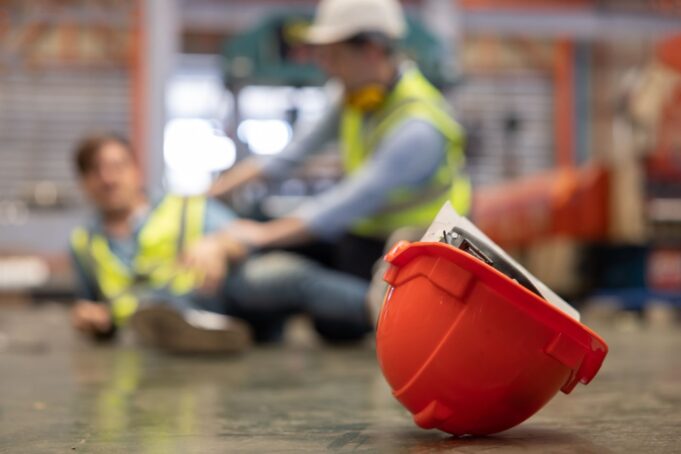Construction accidents usually result in life-altering injuries. The risks might be high in that profession, but if someone else’s negligence led to your injuries, you may be able to recover compensation to cover your expenses.
The key is proving negligence, which isn’t always easy alone. With serious injuries, you’ll have a long road ahead as you heal. A construction accident attorney can be very helpful in gathering the necessary evidence to prove that negligence is a factor.
What Is Negligence and How Do You Prove It in a Construction Accident?

Negligence refers to when someone doesn’t exhibit proper care in a situation. In the legal world, when someone’s negligent or careless acts cause you to become injured, you can pursue a lawsuit and get compensation. This compensation can help you avoid sinking into debt from medical bills, lost wages, and other damages that resulted from your injuries.
Proving negligence in a construction accident is where things can get more complicated. Every construction company has a duty to ensure that all people near or on their work sites are kept safe.
Filing a lawsuit for a construction accident will require you to show evidence that there was negligence involved and that it caused you to get hurt. Each construction accident is unique, and to prove negligence was a factor, you need to consider how the accident happened.
It could have been a piece of machinery falling on you from above, or your scaffolding may not have had a railing. Electrocutions are common on construction sites, and some employers neglect to follow the safety requirements set by OSHA. Whatever the cause of your injuries, it should shed some light on who was responsible for preventing this incident from happening to you.
What Can You Use to Prove Negligence in Your Construction Accident?
Accidents in construction get complicated because workers’ compensation is meant to cover your injuries. However, if an employer or a third party was negligent, you have a means for legal recourse.
The first step is showing evidence of your injuries. Medical records are important as they’ll show the extent of those injuries and recommendations from the doctors. You should make sure you go to every follow-up appointment and see any specialists that are recommended.
The medical records will detail your injuries, how they occurred, their severity, and all related procedures to treat them. With the help of an attorney, expert witnesses can be called in to recreate the accident and detail how negligence played a role in your injuries.
Injuries from construction accidents have the potential to leave you with life-long consequences. You may be unable to work in construction or any other field again. You may not be able to do the things you once loved and be in constant pain. If you did everything right by following the safety protocols but wound up injured because of someone else’s negligence, you’ll need to determine who is liable.
Who Could Be Liable for Your Construction Accident?

Depending on the circumstances of how your injuries occurred, there may be more than one liable party in your construction accident case. Malfunctioning machinery may mean that the equipment manufacturer is liable for your injuries. Meanwhile, if your injuries were because of a danger on the construction site that was ignored, the contractor, subcontractor, or property owner may be liable.
Since there are so many potentially liable parties, it’s important that you speak with an attorney about your accident and injuries. This will ensure you have the best chance of winning your case and receiving the compensation you deserve.
Settlement vs. Trial: Weighing the Options
Settlement vs. Trial: Weighing the Options
When pursuing a construction accident case, one of the critical decisions the injured party must make is whether to seek a settlement or take the matter to trial. Both options have their pros and cons, and understanding the implications of each can significantly impact the outcome of the case.
Understanding the potential outcomes of settling out of court:
Opting for a settlement can offer a quicker resolution to the case, as it involves negotiation between the injured party and the defendant or their insurance company. Settlements can also save on legal costs and minimize the emotional toll of a prolonged legal battle. However, the compensation amount may be lower than what could be obtained through a successful trial, and there is limited room for further appeals or modifications to the settlement agreement.
Benefits and drawbacks of pursuing a trial:
Trials allow for a comprehensive examination of the evidence in front of a judge or jury, providing an opportunity to present a compelling case. If successful, trials may result in higher compensation, and the verdict can set a precedent for future similar cases. However, trials can be time-consuming and expensive, with no guaranteed outcome. Additionally, the process can be emotionally draining for the injured party and their family.
Considering the time, cost, emotional impact, and potential compensation, it is essential for the injured party, along with their legal counsel, to carefully evaluate the merits of both settlement and trial options before making a well-informed decision that aligns with their best interests.
Tips for Strengthening the Negligence Claim

Proving negligence in a construction accident case requires solid evidence and a well-presented argument. To strengthen the negligence claim and increase the chances of a favorable outcome, consider the following tips:
Documenting all medical treatment and related expenses:
Keeping detailed records of medical treatment, hospital visits, medications, and rehabilitation expenses helps establish the extent of injuries and the financial impact on the injured party. These records can provide concrete evidence of the damages suffered.
Keeping a record of lost wages and diminished earning capacity:
If the construction accident resulted in the inability to work or reduced work capacity, maintaining a record of lost wages and potential future earning capacity can bolster the claim for economic damages. Expert testimony may be necessary to estimate future earnings accurately.
Gathering and preserving evidence from the accident scene:
Swiftly collecting and preserving evidence from the accident site is crucial. This includes photographs, videos, and any physical evidence that might support the claim. The condition of the construction site after the accident may be altered, so documentation should happen as soon as possible.
Securing witness statements:

Identifying and interviewing witnesses who saw the accident occur or can testify to safety violations can provide valuable firsthand accounts. Witness statements can strengthen the claim by corroborating the injured party’s version of events.
Reviewing safety protocols and industry standards:
Demonstrating that the defendant failed to adhere to established safety protocols and industry standards can be critical in proving negligence. Comparing the defendant’s actions to industry norms can help establish a breach of duty of care.
Engaging expert testimony:
Expert witnesses with relevant experience and knowledge can provide professional opinions that support the negligence claim. Their expertise can lend credibility to the case and help the court understand complex technical aspects of the accident.















